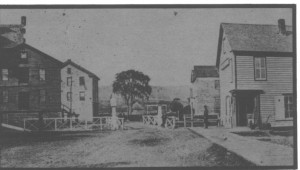Chenango Canal
- Home
- History of the Town of Sherburne
- Chenango Canal
The Chenango Canal played a vital role in the history of the Town of Sherburne. It spurred the local economy, served as a transportation route and connected the town to the rest of the state.
 The idea of a nationwide canal system began in the 18th century when explorers and traders saw a need for a better way of transporting goods and services. Locally, in the early part of the 19th century there was a need for a better route to Albany so that farmers could trade and sell their goods. A canal system would solve that problem.
The idea of a nationwide canal system began in the 18th century when explorers and traders saw a need for a better way of transporting goods and services. Locally, in the early part of the 19th century there was a need for a better route to Albany so that farmers could trade and sell their goods. A canal system would solve that problem.
On February 23, 1833, an act by the New York State Legislature for construction of the Chenango Canal was adopted. The canal connected the city of Binghamton, New York to the Erie Canal at Utica, New York. Actual construction began July of 1834. Historic records show that the population of Sherburne increased exponentially when Irish immigrants and others looking for work came to Sherburne to help build the canal in the mid 1830s. The canal was completed October of 1836. It was 97 miles long, 40 ft wide at the top, 28 ft wide at the bottom and was 4 ft deep. There were 116 locks, each being 90 x 15 ft, and all were constructed of stone. The canal officially opened on May 1, 1837 and was used for 41 years. Various goods such as hops, lumber, potatoes, wheat and other commodities were shipped to other places via the canal, helping the local economy grow.
During the American Civil War, the canal served as a route for the local soldiers to travel to the front lines in the south. The canal route went directly through the village of Sherburne and if one were to explore it, they would find remnants that can be seen at various places along north and south main street in the village and along routes 12 and 12b.
To learn more about the Chenango canal in Sherburne, please visit the log cabin at the historical park.
Contact Us
Town of Sherburne © 2025. All Rights Reserved | Privacy Policy
